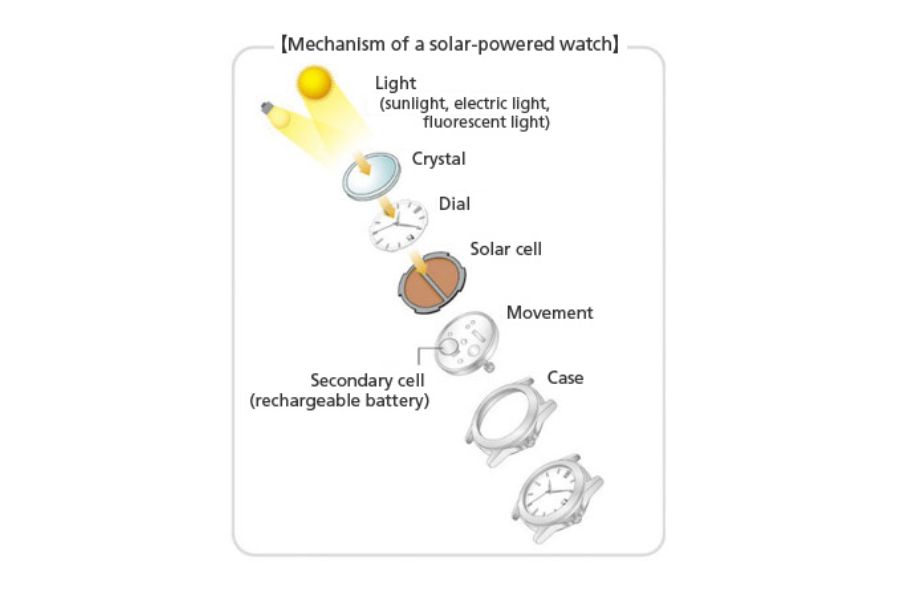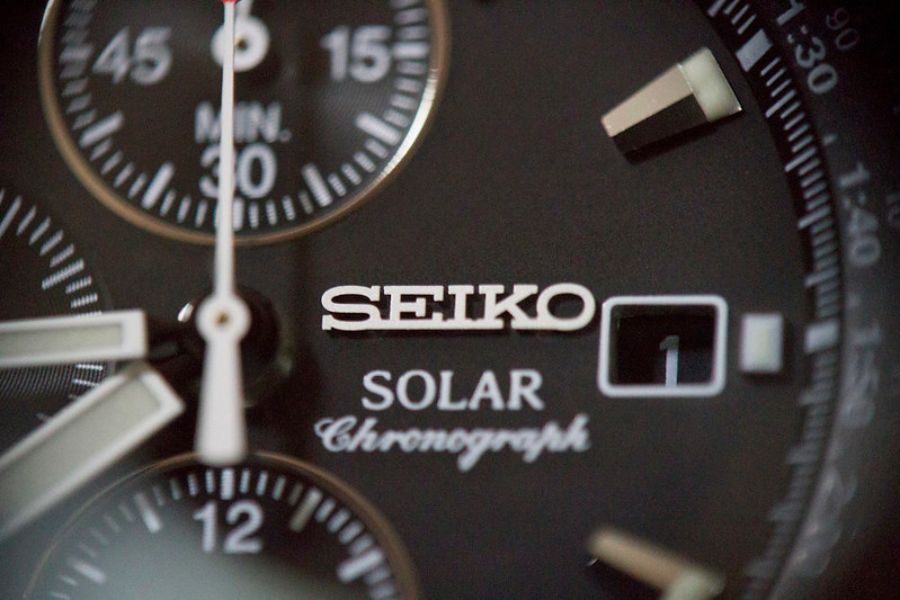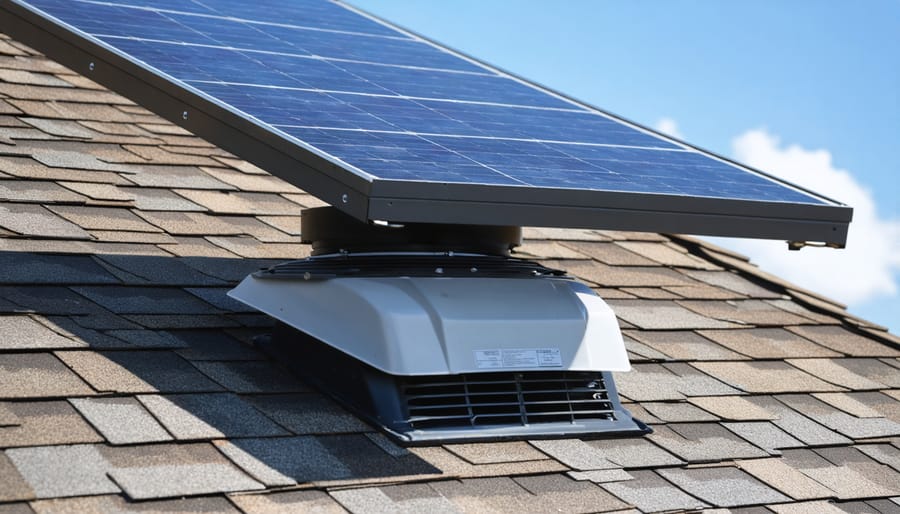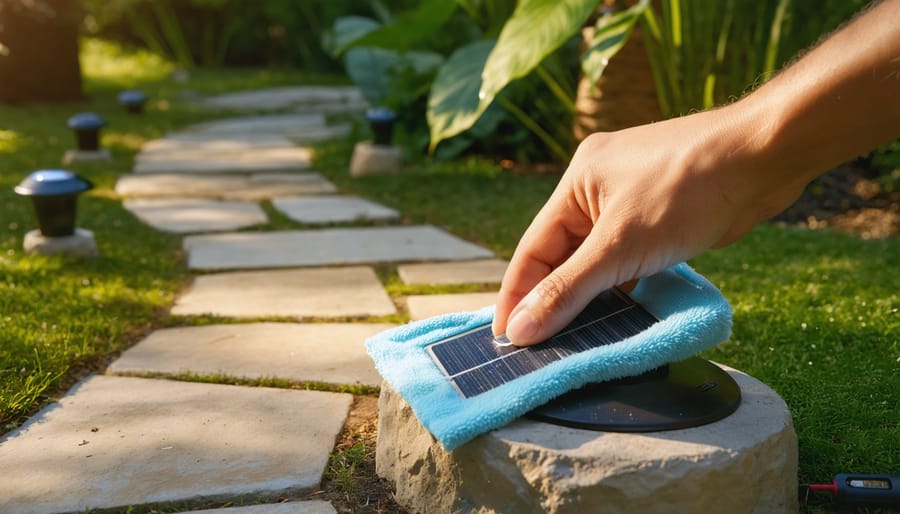How to Charge a Solar Watch
Updated:

A solar watch is powered by light energy from the sun. It converts sunlight into electricity using solar cells to charge an internal battery in the solar watch. This allows the watch to run without ever needing a battery replacement. But to keep a solar watch powered, you must regularly expose it to light.
Charging a solar watch is straightforward. You simply need to ensure the solar panel receives sufficient sunlight or artificial light.
Basic knowledge lets you easily keep your solar watch powered for reliable timekeeping. This article provides a detailed guide on solar watch charging.
What Is a Solar Watch and How Does It Work?

A solar watch has a small solar panel, usually on the watch face. This solar panel contains solar cells that convert light into electricity. The electricity charges a storage battery within the watch.
Sunlight contains electromagnetic radiation known as photons. When these photons strike the solar panel, they excite electrons in the solar cells. This generates an electric current that charges the battery.
The battery then powers the watch movement, providing energy to run the motors and electronics. This eliminates the need to replace watch batteries.
Many solar watches have a power reserve indicator to show the battery level. This lets you monitor if the watch needs recharging. Solar watches also have power-saving features to conserve energy when not exposed to light.
Using Sunlight to Charge a Solar Watch
Sunlight is the most efficient way to charge a solar watch. The solar cells are designed to effectively convert natural sunlight into usable electricity.
To charge with sunlight:
- Place the watch outside in direct sunlight, with the solar panel facing up.
- Alternatively, put the watch on a sunny windowsill indoors. Ensure no obstructions block the sunlight.
- A few hours per week in the sun is usually sufficient to keep the watch charged.
- Check the power indicator to monitor charging progress.
When placed in direct outdoor sunlight, most solar watches will fully charge their battery in 2-4 hours. The actual time varies depending on the watch model and sunlight intensity.
Partial charging is also effective. Just 3-5 minutes of direct sun per day provides enough energy to operate a solar watch.
Charging a Solar Watch Indoors
You can charge a solar watch indoors using artificial light sources. However, this takes longer than direct sunlight.
Some options for indoor solar watch charging include:
- Placing the watch under a bright desk lamp. LED and fluorescent lamps work best.
- Holding the watch against the flashlight on your phone for a quick boost.
- Positioning the watch near a bright window to utilize indirect daylight.
Expect indoor charging to take 10-20 times longer than direct sun exposure. But even a partial charge extends the watch’s power reserve.
Charing your Solar Watch using an Artificial Light Source

Small handheld solar chargers and flashlights can supplement natural light. These employ high-intensity LEDs tuned to the wavelengths solar cells are most sensitive to.
While not as fast as sunlight, a quality solar charger provides a consistent light source for indoor charging. Look for units that emit at least 10,000 to 30,000 lux.
LED flashlights also work. Hold the solar watch right against the flashlight LEDs for several minutes to deliver concentrated light. This provides a quick power boost in a pinch.
A one-hour daily session on a specialized solar charger can simultaneously maintain the charge on multiple watches. It’s a convenient way to charge a watch collection indoors.
How Long Does it Take to Charge a Solar Watch?
The solar watch charging duration depends on:
- Light Intensity – Measured in lux. Bright sunlight is up to 100,000 lux. Indoor light is 100-1000 lux. More intense light charges faster.
- Light Source – Direct sun is the most efficient. Indirect sun through a window takes longer. Artificial light is the slowest.
- Battery Level – Fully recharging a depleted battery takes the longest. Topping up an existing charge is quicker.
- Watch Model – Battery capacity and solar cell efficiency impact charging speed.
The charging process mainly depends on how much energy is available for charging. This varies depending on whether you charge the solar watch indoors or outdoors.
As a general guide, here’s how long the charging process takes under different lighting conditions:
- Full sunlight: 2-4 hours for a full charge. 5 minutes for one day’s operation.
- Indirect sun: 10-15 hours for full charge. 30 minutes for daily usage.
- Artificial light: Up to 100 hours for a full charge. 1-8 hours to power the watch for one day.
Tips for Faster Solar Watch Charging

You can speed up how fast your solar watch battery charges by:
- Placing it in direct sun rather than shade or behind glass.
- Using the brightest light source available – direct sunlight is best.
- Removing obstructions like sleeves that block the solar panel.
- Charging smaller batteries or partially charged watches will be quicker.
- Avoid overcharging once the battery is full – this wastes energy.
- Clean the solar panel regularly so dirt doesn’t impede light absorption.
- Replace old batteries that don’t hold charge efficiently.
- Store watches in sunlight when not being worn to maintain the charge.
Does a Solar Watch Charge on Cloudy Days?
Solar watches will slowly charge even on cloudy days. But, due to lower light intensity, it takes much longer than the direct sun.
The solar panel may only receive 10-25% of peak sunlight intensity on an overcast day. So a full charge could take 20 hours in cloudy weather compared to 2-3 hours on a clear day.
But brief sun exposure on cloudy days can provide a useful power boost. The watch will absorb whatever sunlight is available through cloud cover.
Place the watch in a sunny window to utilize whatever daylight is present on cloudy days. This will gradually recharge the battery.
Can You Overcharge a Solar Watch?
It’s not possible to overcharge modern solar watches. They have a built-in overcharge prevention system.
Once the battery is fully charged, the watch circuitry automatically stops absorbing current from the solar cells. This avoids overcharging the battery.
The watch redirects any excess solar power away from the battery once it detects a full charge. So leaving a solar watch in sunlight does not damage or overcharge the battery.
Some solar watches indicate when the battery is fully charged. The power level indicator will show a full bar or reading. The watch can then be removed from the light source until it requires charging again.
How Long Does a Solar Watch Battery Last?
With proper care, the solar watch’s rechargeable battery lasts 5-10 years on average. After this time, the battery may need replacement.
Gradual battery life decline is normal over years of use. Letting the battery fully discharge causes additional wear. Keeping it topped up with regular light exposure extends longevity.
Other factors impacting solar watch battery lifespan:
- Temperature – Heat wears batteries faster. Avoid leaving watches in hot cars.
- Charge Cycles – Frequent partial charging causes more wear than full discharges.
- Moisture Damage – Water corrosion can ruin batteries. Keep the watch clean and dry.
- Physical Shock – Drops or impacts can damage the small battery.
- Old Age – Battery chemicals degrade over time regardless of use.
A typical solar watch battery replacement cost is $60-120. Some watches allow DIY battery changes, others need professional service.
Troubleshooting Solar Watch Charging Problems
Here are some solutions for common solar watch charging issues:
- The Watch Won’t Charge: The battery may be depleted too long. Leave it in direct sun for up to a week to attempt revival. Otherwise, the battery likely needs replacement.
- Charge Doesn’t Last: The rechargeable battery wears out after years of use. Replace the battery so it holds a charge properly.
- Takes Longer to Charge: Dirty solar panels or faded batteries charge slower. Try cleaning the panel and topping up the charge regularly.
- Power save mode activated: Low charge triggered the power save feature. Expose to light until the power indicator shows fully charged.
- Erratic operation: Moisture may have corroded internal electronics if exposed to leaks or condensation. Service or repair may be required.
Maintaining and Storing Solar Watches
Follow these solar watch care tips:
- Clean the solar panel regularly with a soft brush and mild soap. Avoid scratching the panel.
- Top up the charge every few weeks if storing the watch. Don’t let the battery fully discharge.
- Rinse watches in fresh water after exposure to sweat, salt water, dirt, or chemicals.
- Avoid dropping or shocking the watch to prevent internal damage.
- Store in cool, dry locations without direct sunlight to minimize battery deterioration.
- Every 2-4 years have the seals and gaskets checked to maintain water resistance.
Proper maintenance and charging will ensure you get years of reliable service from a quality solar-powered watch.
Solar Watch Charging FAQs
How Do You Charge a Seiko Solar Watch?

Seiko Solar watches charge the same way as any solar watch. Simply place in direct sunlight for 2-4 hours to fully charge from empty. For weekly maintenance, Seikos need about 60 minutes of sun.
Can You Charge a Solar Watch at Night or With Moonlight?
No, solar watches cannot charge at night. Solar cells require daylight, artificial light, or other illumination to generate electricity. Moonlight and starlight are too dim. Place by a bright indoor light overnight.
Is a Solar Watch Charger Worth Buying?
A dedicated solar watch charging lamp with calibrated high-intensity LEDs can provide consistent charging year-round. The $30-$50 cost may be worthwhile if you live in cloudy areas or need to charge multiple watches.
Should You Take a Solar Watch off to Charge It?
Solar watches will charge faster when placed in optimal sunlight rather than worn on the wrist. But you can effectively charge while wearing if sunlight fully reaches the solar cells.
How Long Does a Solar Watch Battery Last?
Rechargeable batteries inside solar watches last approximately 5-10 years on average. Storing the watch in darkness when not in use extends the battery lifespan by reducing unnecessary discharge cycles.










